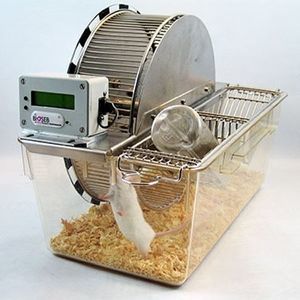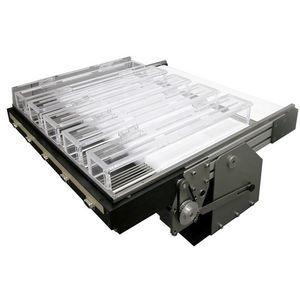
Preclinical research grip strength test BIO-GS4for ratsfor micefor rodents
Add to favorites
Compare this product
Characteristics
- Applications
- for preclinical research
- Animal type
- for rats, for rodents, for mice
- Other characteristics
- USB, coordination
Description
An easy way to objectively quantify the muscular strength of mice and rats, and to assess the effect of drugs, toxins, muscular (i.e. myopathy) and neurodegenerative diseases on muscular degeneration. It is widely used in conjunction with the ROTAROD motor coordination test: a normally coordinated rodent will show a decreased latency to fall off the rotating rod if its muscular strength is low. The Grip Strength Test is a must for your research on activity, motor control & coordination, and is particularly well suited for studies on Parkinson's & Huntington's disease.
New features GS4 - 2023: Color display with permanent backlight screen for easier reading, reset by footswitch, Improved battery time, Larger data memory of 500 values, Animal counter, USB port (charging/data transfer)
BIOSEB's Grip Strength Test allows the study of neuromuscular functions by determining the maximal peak force developed by a rodent (rat or mouse) when the operator tries to pull it out of a specially designed grid or bar, which are available for both fore and hind limbs. The Grip Test has been documented in numerous literature, and is included in the Functional Observational Battery (FOB) to screen for neurobehavioral toxicity. In this context, changes in grip strength peak values of rodents (rats or mice) are interpreted as evidence of motor neurotoxicity.
This force assessment is widely used in conjunction with the ROTAROD motor coordination test, since a normally coordinated rodent will show a low score if its muscular strength is low.
Catalogs
No catalogs are available for this product.
See all of Bioseb‘s catalogsExhibitions
Meet this supplier at the following exhibition(s):


Related Searches
- Thermometer
- SpO2 monitor
- Digital thermometer
- Infrared thermometer
- Electronic ventilator
- Non-contact thermometer
- Portable ventilator
- Probe thermometer
- Digital controller
- Vital signs monitoring device
- Compact pulse oximeter
- Activity meter
- Blood pressure vitals monitor
- Animal research cage
- Modular animal research cage
- Laboratory controller
- Temperature controller
- Experiment maze
- Mice experiment maze
- Rat experiment maze
*Prices are pre-tax. They exclude delivery charges and customs duties and do not include additional charges for installation or activation options. Prices are indicative only and may vary by country, with changes to the cost of raw materials and exchange rates.






